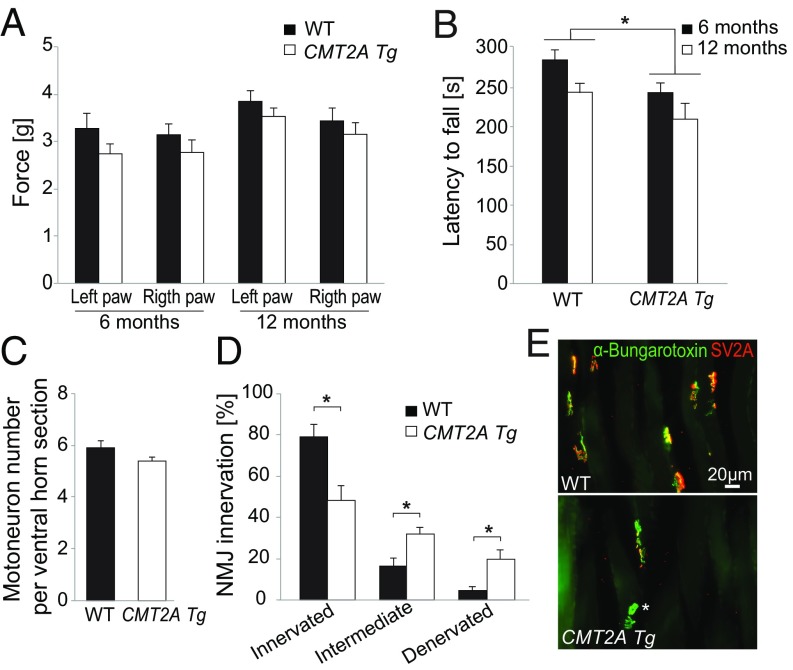Fig. 1.
CMT2A Tg mice show locomotor defects and muscle denervation but no detectable motoneuronal death. (A) Evaluation of sensory function with the von Frey test at the age of 6 and 12 mo (WT: n = 11 and CMT2A Tg: n = 12). Statistical analysis: two-way repeated-measures ANOVA (group × time) with Newman–Keuls post hoc test. (B) Evaluation of motor function with rotarod test at the age of 6 and 12 mo (WT: n = 11 and CMT2A Tg: n = 12). Statistical analysis: two-way repeated-measures ANOVA (group × time, significant group effect) with Newman–Keuls post hoc test. (C) Number of motoneurons in lumbar spinal cord of 12-mo-old animals (n = 4 for both WT and CMT2A Tg). Statistical analysis: two-tailed unpaired Student’s t test. (D) Level of innervation of soleus muscle evaluated based on the colocalization of the nerve terminal marker SV2A and acetylcholine receptor marker α-bungarotoxin in 12-mo-old WT (n = 5) and CMT2A Tg (n = 7) mice. Statistical analysis: two-tailed unpaired Student’s t test. (E) Representative photomicrographs of NMJ in WT and CMT2A Tg soleus muscle, stained with anti-SV2A antibodies and α-bungarotoxin. Note the presence of unoccupied NMJ positive for α-bungarotoxin only (indicated by an asterisk) in the CMT2A Tg mice. *P < 0.05.

